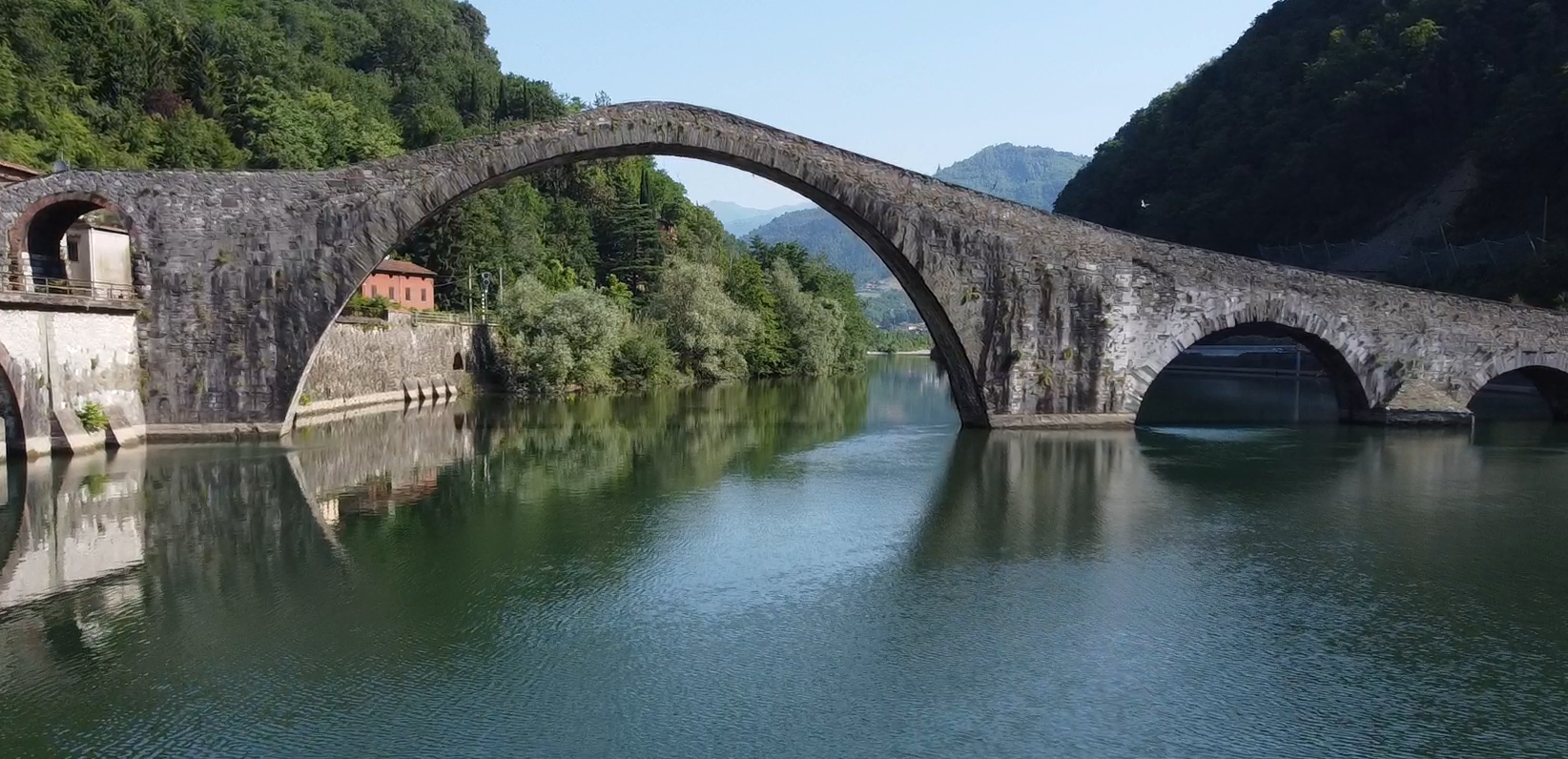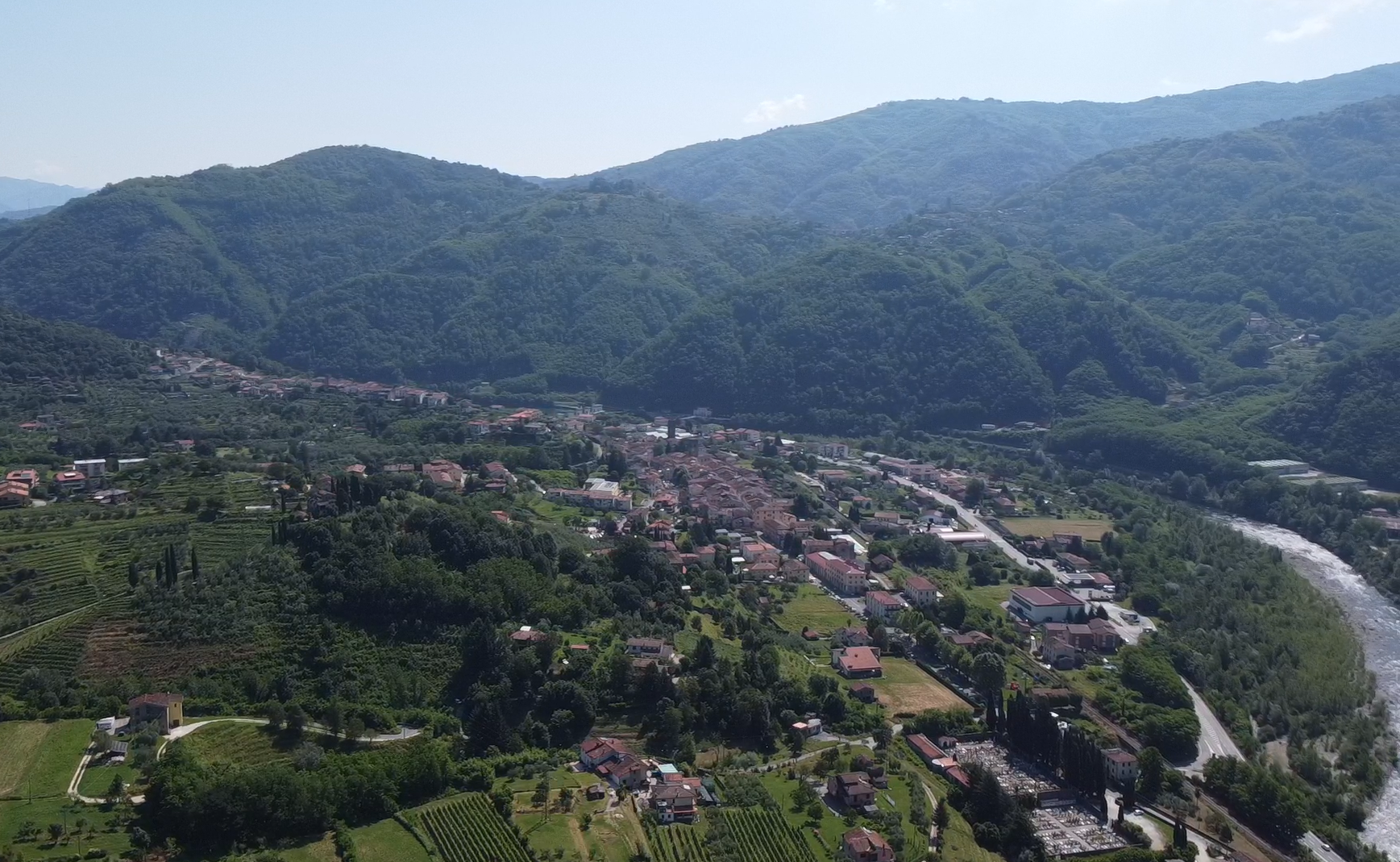
The town of Borgo a Mozzano is located on the right bank of the Serchio River with the Apuan Alps (Alpi Apuane) on the west and the Apennines on the east.
It is the administrative center of an area rich in history, legends, and traditions.
Borgo a Mozzano is known for one of the most mysterious and fascinating monuments in the entire province of Lucca: the Maddalena Bridge more commonly known as the Devil’s Bridge. The 90-meter long bridge is a remarkable piece of medieval engineering and associated with a rather particular legend.
Borgo a Mozzano, however, is not only the Devil’s Bridge, its old historical center is worthy of a stroll to discover interesting buildings, churches, squares, and small gardens.
In the gardens, azalea plants, which in the language of plants symbolize maternal love, can often be admired. Every year in April, an exhibition market is held in the historic center dedicated to this beautiful plant with its magnificent flowers also found in the form of shrubs and small trees.
The birth of this event dates back to 1970 when the Shell Agricultural Studies Center, after having conducted a survey in the territory of Borgo a Mozzano, noticed that in every garden there were numerous azalea plants that had developed and reproduced themselves spontaneously with great ease.
Another event, which attracts thousands of people every year to the town, takes place on October 31st and, of course, celebrates Halloween. Borgo a Mozzano welcomed this event for the first time in 1993. It takes place in the streets of the center and also recreates the legend of Lucida Mansi, a 17th-century noblewoman of Lucca, who, in exchange for many years of youth, sold her soul to the devil. Every year, Lucida passes through the town in procession on a chariot surrounded by demons and fire-breathers. The procession ends on the Devil’s Bridge where the ‘soul’ of Lucida is thrown down into
the underworld among flashing lights and fireworks.

When visiting the town, a visit to the Gothic Line Museum is also a must. It is a one-of-a- kind museum with many interesting historical documents and artifacts.
In 1943, Field Marshal Albert Kesselring, commander-in-chief of the Armed Forces in German-occupied Italy, ordered the construction of a defensive line along the Apennines for over 300 km. It became known as the Gothic Line and passed through Borgo a Mozzano. This barrier, which divided Italy in two joining the Adriatic coast to the Tyrrhenian coast, was, from the German point of view, a last attempt to stop or slow down the advance of the Allies along the Italian peninsula toward the north of Italy.
Just a few hundred meters from the town, there is still a long stone and reinforced concrete wall, which is none other than the original anti-tank wall that was to stop the Allies coming from Lucca. This is one of the longest walls of the Gothic Line that has survived to this day. Numerous fortifications, bunkers, trenches, gun emplacements, and blockhouses can be found along the hills overlooking the Serchio River.
Not to be missed is a visit to the interior of the old bunkers located at street level. For those who would like to combine the historical visit with a walk through large chestnut woods, there are many interesting trails, of varying length and difficulty, which lead to bunkers located at higher altitudes.

Borgo a Mozzano has always had a temperate climate and this has favored human settlements since the Neolithic Age. This section of the valley was an area of contact and exchange between the proud Ligurian Apuan people and the Etruscans.
Upon defeating the Ligurians, the Romans set up military posts connected to one another by an efficient road network, including the Via Clodia Nova, an important communication road on the right side of the Serchio River.
Up to the end of the Middle Ages this road and the river, still navigable for the most part, were the main means of access to the valley.
Until the tenth century Borgo a Mozzano consisted of a small group of houses. It is believed that its subsequent fortune and importance coincided with the construction of the Devil’s Bridge, which soon became the crossroads of all the routes in the valley.
Text created for the Municipality of Borgo a Mozzano